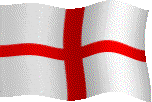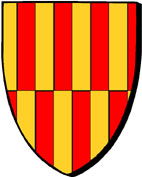Encyclopédie Marikavel-Jean-Claude-EVEN/Encyclopaedia/Enciclopedia/Enzyklopädie/egkuklopaideia

England Bro Saoz |
Wallsend Segedunum |

Northumberland *** |
| pajenn bet digoret an 11.10.2005 | page ouverte le 11.10.2005 |
* forum du site Marikavel : Academia Celtica |
dernière mise à jour 27/07/2021 14:03:40 |
![]()
|
Définition : Ville d'Angleterre; comté de Northumberland. Forteresse romaine Segedunum.
|
|
![]()
|
Extraits de la carte Map of Roman Britain, par Ordnance Survey Segedunum / Wallsend est indiquée par le point bleu, entre Pons-Aelius / Newcastle et la Mer du Nord. |
![]()
|
Extraits de la carte Hadrian's Wall (two inches to one mile), par Ordnance Survey. 1964, 2é édition Segedunum / Wallsend se trouve au milieu nord de la courbe concave de la rivière Tinea / Tyne, près de son embouchure. Le Mur se dirige vers le sud-ouest (à votre main gauche), et indique les fortins (mile-castles) n° 1 et 2. |
![]()
|
Histoire : Segedunum, du fait de sa position près de Pons-Aelius, qui se réfère à l'empereur Hadrien, révèle une création au début même de la mise en place du Mur d'Hadrien, soit vers 120/122 environ. A la fin du IVè siècle, Segedunum a reçu en garnison la quatrième cohorte lingone (cf. Notitia Dignitatum). |
![]()
| Blason : |
|
![]()
|
Étymologie : * A.LF. Rivet & Colin Smith , p 452 : SOURCE. - Ravenna, 10724 : Serduno. - Notitia Dignitatum, XL,33 : Tribunus cohortis quartae Lingonum, Segeduno ( variante : Seduno). DERIVATION. The first element in this and the three following names has a base in Indo-European *segh-, with many derivatives including British *sego- perhaps 'power, force', Irish seg, segh 'strength, vigour', Welsh hy 'daring, bold'; and in Gothic sigis, German Sieg 'victory'. For names based on it, see in general Holder II. 1444 ff., GPN 254-57. Place-names based on Seg- with suffix or in compounds (always as first element) are widespread all over Gaul, Spain, W. Germany and N. Italy, and may extend more widely still : Rostaing ETP 246-50 (following Trombetti) thinks the root too widely extended for it to be reckoned as Celtic and Germanic only. In personal names a sense 'strong, bold' is an obvious one. This may apply to place-names also, though scholars familiar with Gothic and German senses of Seg- have often attributed the meaning ' (place of) victory ' to these, so that e.g. Segobriga > Segorbe (Castellon, Spain) either 'strong fort' or ' victory-fort'.Abroad, four places called Segodunum are known, three in Gaul and one in Germany (RIO, XIV (1962), 180), the best-known being Segodunum Rutenorum now Rodez (Aveyron, France). For -dunum, see BRANODUNUM. The name is thus 'strong fort' or possibly 'victory-fort'. Since this is a purely Roman fort, the naming-process is the same as that outlined in discussion under DUROBRIVAE1. This name should perhaps be more classically Segodunum, with -o-, and the following should in the same way be Segolocum; the better-recorded Continental analogues normally show -o- in compounds. However, -e- is shown both by ND above, and twice by AI in the next name. As Jackson in LHEB 645 notes, this is a matter of the slurring or relaxation of the unstressed vowel, well documented as time went on (in post-Roman inscriptions) and normal also in Latin speech documented in Romano-British epigraphy". IDENTIFICATION. The Roman fort at Wallsend, Northumberland (NZ 3066), whose third-century garrison was Cohors IV Lingonum (RIB 1299-1391). ***** * Eilert Ekwall : "Wallesende, c. 1085 LVD. The end of the Roman Wall" * A.D Mills : idem Ekwall ***** Commentaire JC Even : le toponyme est purement descriptif. il s'agit de l'extrémité ( = end) du Mur ( = Wall) maçonné d'Hadrien sur l'embouchure de la Tyne. Entre Wallsend et la mer du Nord, l'ouvrage de défense ne consiste plus qu'en un talus palissadé. Le toponyme se traduit en français par : "la grande forteresse", s'agissant d'une forteresse de passage d'un fleuve et de contrôle d'une embouchure. Son interprétation permet de comprendre celle d'autres sites de ce nom : En Petite Bretagne armoricaine, on peut expliquer par l'évolution théorique *Sege-Dunum > *Se-zun, le toponyme Sizun, dans les Monts d'Arrée. |
![]()
| Bibliographie; sources :
* Ordnance Survey : Map of Roman Britain. 1956. * Ordnance Survey : Hadrian's Wall. 1964. * Eilert Ekwall : The Concise Oxford Dictionary of English Place-names. Clarendon Press. Oxford. 1936 - 1980 (4è édition). * A.LF. Rivet & Colin Smith : The Place-names of Roman Britain. Batsford Ltd. London. 1979-1982. * A.D Mills : Oxford Dictionary of British Place Names. Oxford University Press. 1991-2003 |
![]()
|
Liens électroniques des sites Internet traitant de Wallsend / Segedunum : * lien communal : https://hadrianswallcountry.co.uk/visit/wallsend * pajenn Wikipedia brezhonek : * forum du site Marikavel : Academia Celtica * Autres pages de l'encyclopédie Marikavel.org pouvant être liées à la présente : http://marikavel.org/heraldique/bretagne-familles/accueil.htm http://marikavel.org/broceliande/broceliande.htm * solidarité nationale bretonne avec le département de Loire Atlantique : Loire-Atlantique * sauf indication contraire, l'ensemble des blasons figurant sur cette page ont été dessinés par J.C Even, sur bases de GenHerald 5. * Introduction musicale de cette page : Bro Goz Ma Zadoù, hymne national breton, au lien direct : http://limaillet.free.fr/MP3s/BroGoz.mp3 hast buan, ma mignonig, karantez vras am eus evidout go fast, my little friend, I love you very much |
![]()